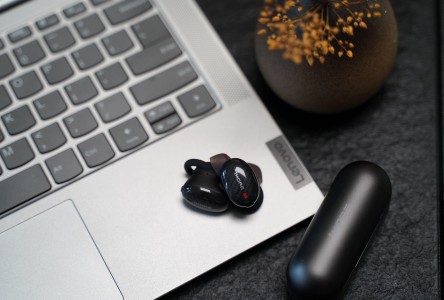In an increasingly noisy world, where distractions abound in our daily lives, the demand for effective noise-cancelling solutions has surged. Noise-cancelling earplugs have emerged as a popular choice for individuals seeking peace and quiet, whether at home, in the office, or while traveling. These innovative devices are designed to reduce unwanted ambient sounds, providing users with a sanctuary of silence. But how do they work, and what makes them a preferred option for many? Exploring the intricacies of noise-cancelling earplugs reveals their functionality, benefits, and applications.
Understanding the technology behind noise-cancelling earplugs is crucial. These earplugs utilize a combination of passive and active noise-cancellation techniques. Passive noise cancellation involves the physical blocking of sound waves, achieved through the earplug’s material and design. Active noise cancellation, on the other hand, employs microphones to pick up external sounds and generate sound waves that are the exact opposite, effectively canceling out the noise. This dual approach allows for a significant reduction in unwanted sounds, making them particularly effective in loud environments.
Comfort is a key factor for users when selecting earplugs. Noise-cancelling earplugs come in various shapes, sizes, and materials, catering to diverse preferences and needs. Silicone and foam are common materials, each offering unique benefits. Silicone earplugs are often reusable and provide a snug fit, while foam earplugs are disposable and mold to the shape of the ear canal for enhanced comfort. Ensuring a proper fit is essential for maximizing noise reduction and comfort, as poorly fitting earplugs can lead to discomfort and reduced effectiveness.
The applications of noise-cancelling earplugs are vast and varied. Many people use them to enhance focus in busy work environments, allowing for improved productivity. Others find them beneficial for sleep, as they can significantly reduce disturbances from snoring partners or traffic noise. Additionally, travelers often rely on these earplugs to create a more peaceful experience during flights or long journeys, helping to minimize the stress associated with noisy surroundings.
Health benefits associated with using noise-cancelling earplugs are noteworthy. Chronic exposure to loud noises can lead to hearing loss and increased stress levels. By using these earplugs, individuals can protect their hearing and promote a more relaxed state of mind. This is particularly important for those living in urban areas, where noise pollution can have adverse effects on overall well-being. The ability to create a quieter environment can lead to improved mental health and a better quality of life.
When selecting noise-cancelling earplugs, users should consider several factors. Noise reduction rating (NRR) is a critical metric that indicates how effectively earplugs can block out sound. Higher NRR values indicate better sound isolation. Additionally, users should evaluate the intended use of the earplugs—whether for sleeping, studying, or traveling—as this will influence the choice of material and design. Reviews and recommendations can also provide valuable insights into the performance and comfort of various products.
The market for noise-cancelling earplugs has seen significant growth, leading to a plethora of options for consumers. From high-end models equipped with advanced technology to more affordable alternatives, there is a solution for every budget. Brands are continuously innovating, introducing features like Bluetooth connectivity and customizable sound profiles. This evolution in design and functionality caters to the diverse needs of users, making noise-cancelling earplugs more accessible and appealing.
Environmental considerations are also becoming increasingly relevant in the earplug industry. Many manufacturers are now focusing on sustainable materials and production processes. This shift not only addresses consumer concerns about environmental impact but also enhances the overall appeal of noise-cancelling earplugs. Eco-friendly options allow users to enjoy the benefits of noise cancellation while supporting sustainability efforts.
Despite their many advantages, noise-cancelling earplugs are not without their limitations. Some users may experience a sensation of pressure in their ears, particularly with active noise-cancelling models. Additionally, while they are effective at reducing consistent sounds, such as engine noise, they may not be as effective against sudden loud noises. Understanding these limitations can help users set realistic expectations and choose the right product for their needs.
As we look to the future, research into noise-cancelling technology continues to evolve. There is potential for advancements in materials that enhance comfort and effectiveness. Additionally, exploring the psychological impacts of noise cancellation on stress and productivity could yield valuable insights. Ongoing studies can contribute to a deeper understanding of how noise-cancelling earplugs can be optimized for various environments and user preferences.
The significance of noise-cancelling earplugs cannot be overstated, especially in our fast-paced, noisy world. They offer a practical solution for individuals seeking tranquility and focus, while also promoting better health and well-being. As technology advances, the potential for even more effective and comfortable designs is promising. Future research should explore the long-term effects of noise cancellation on mental health and productivity, as well as the development of sustainable materials. By continuing to innovate and study this field, we can enhance our understanding and appreciation of noise-cancelling solutions.

